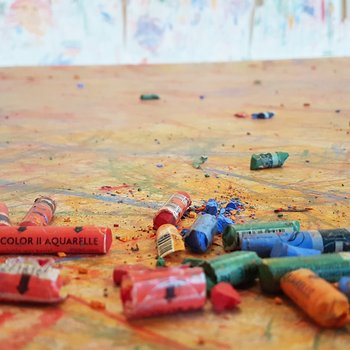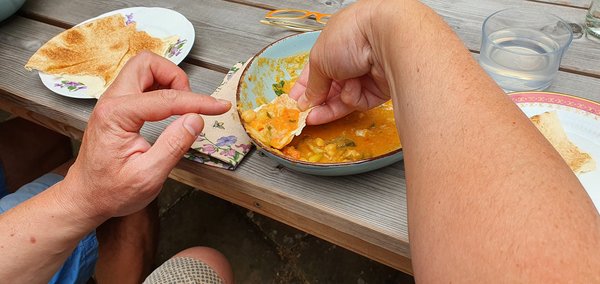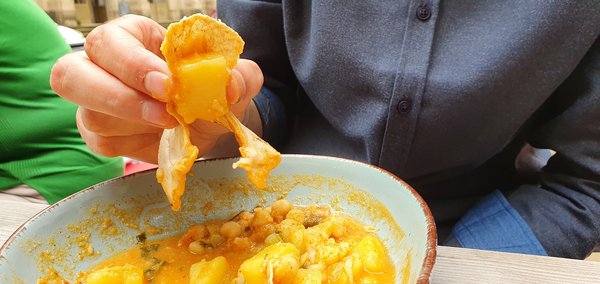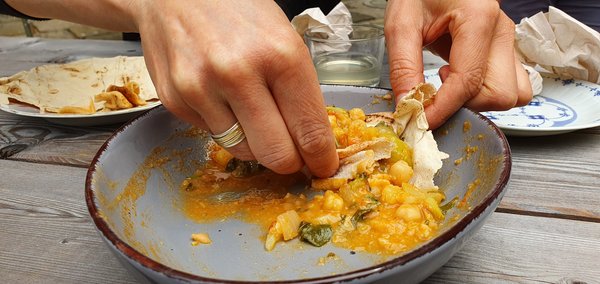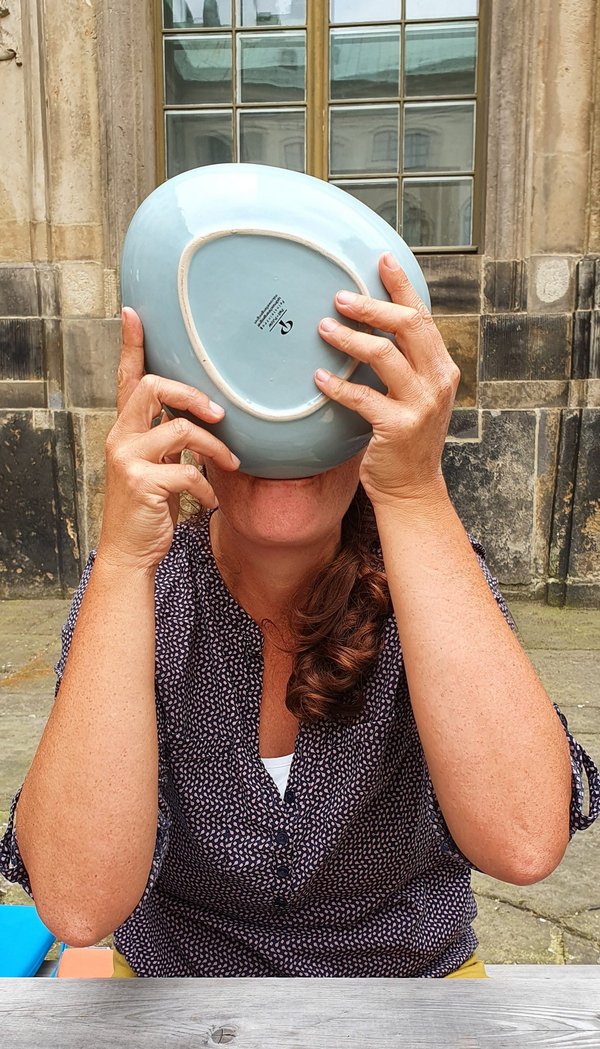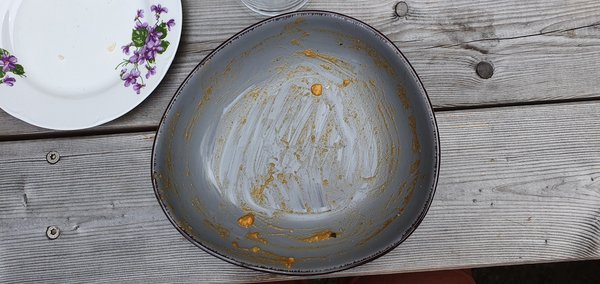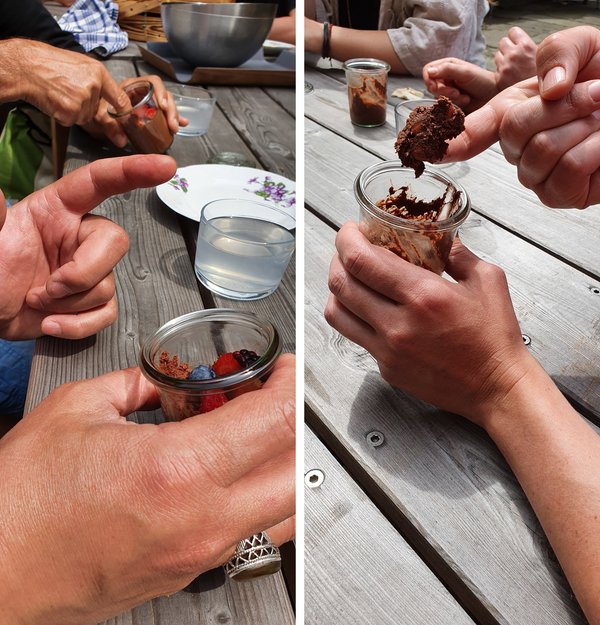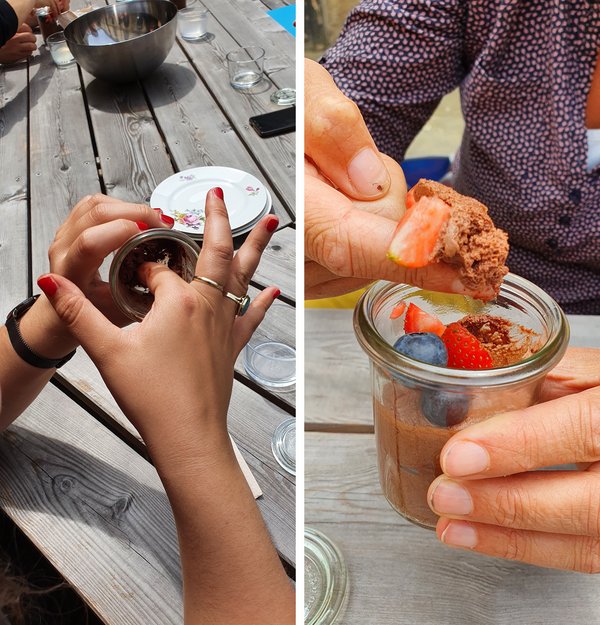Every Friday, a group of 20 to 30 guests come together in the courtyard of the Japanisches Palais to have lunch together and strike up a conversation. They register by e-mail, but a few visitors often turn up on the spur of the moment, asking if there are any places free. This is Lunch for Locals, an event where the Palais Café caters to its guests free of charge. At the lunch, the café focuses its culinary skills fully on sustainability. Many ingredients come from the palace’s own garden; the aim is to produce zero waste, and recycling is a central theme. Any paper waste created is thrown to the worms in a compost bin in the garden. They turn it into soil, which in turn can be used to grow the food the visitors dine on. Ideally, nothing is left behind – and certainly not plastic cutlery.
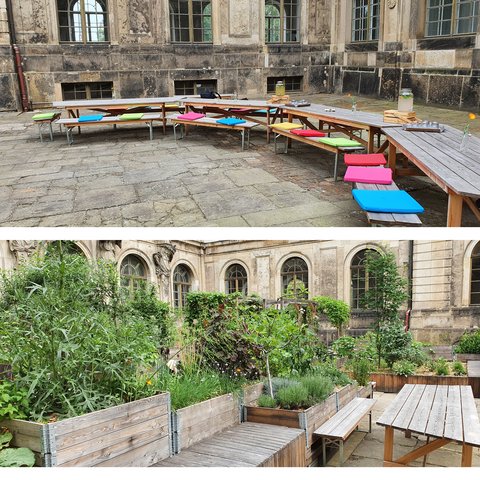
Spoon Archaeology meets Lunch for Locals, 2022
© Staatliche Kunstsammlungen Dresden, Foto: Jacob Franke
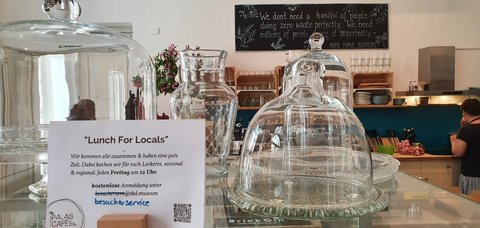
Spoon Archaeology meets Lunch for Locals, 2022
© Staatliche Kunstsammlungen Dresden, Foto: Jacob Franke
The Palais Café and the Spoon Archaeology exhibition thus focus on very similar topics. As a result, it was soon agreed that guests at the Lunch for Locals would be served meals to match the exhibition. On Friday, 20 May, the first of two occasions thus took place involving people eating with their hands. While this might seem barbaric to any sticklers for dining etiquette, seen globally, it is actually closer to being standard practice. Even here in Germany, home of the cake fork, there are certain foods we do not think twice about consuming with our hands. When it comes to street food in particular, from a bratwurst in a roll to ice cream in a cone, doner kebabs and falafel, the hands are a common tool for eating here, too.
At this Lunch for Locals, however, a curry was served: a thick sauce made of all kinds of vegetables. There were also large glass dispensers serving excellent, summery lemonades; one with dandelion and one with lavender and lilac. The “stomach filler” – or so you might call the rather uninviting-sounding “Sättigungsbeilage” once found in German university canteens – was round flatbread. This was there not just to be eaten, however, but also to lift the curry from plate to mouth.
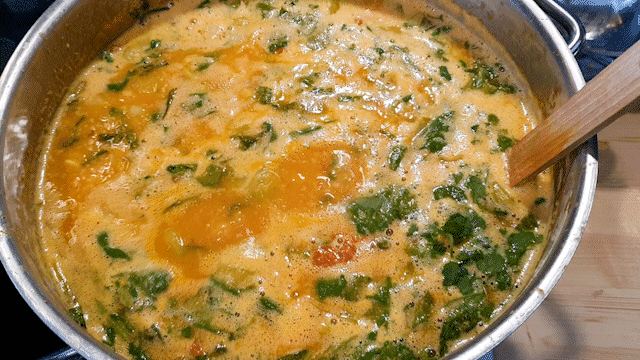
Spoon Archaeology meets Lunch for Locals, 2022
© Staatliche Kunstsammlungen Dresden, Foto: Jacob Franke
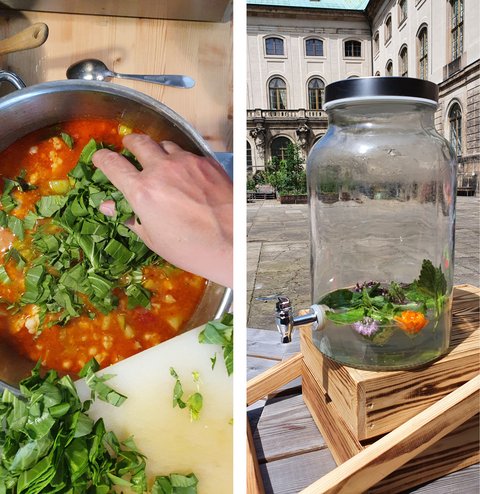
Spoon Archaeology meets Lunch for Locals, 2022
© Staatliche Kunstsammlungen Dresden, Foto: Jacob Franke
After an introduction to the special nature of the event, the guests lost no time rising to the challenge. There was, indeed, no other choice if they wanted to satisfy their hunger. In view of the break with table manners that had been announced, spirits were soon very high. No need to break the ice; instead, they literally broke bread, quickly developing a range of techniques for using it.
Whereas many ate the first few bites in the form of bread “soldiers” dipped in the curry, the standard soon spread of shaping it into a shovel. Some dexterously used the bread as a kind of finger guard to fish chunks out of the curry; others even worked with two hands, employing a sort of dustpan-and-brush principle. All of these techniques led to the same result: by the end of the meal, all the plates really had been scraped clean. Compliments to the guests, compliments to the chefs, compliments to the hand.
This manner of eating did not only have social effects, however. Many of the guests noted that it gave them a different relationship to the food. They reported eating more mindfully. Which hardly comes as a surprise when you consider that the automatic routines we fall into when eating no longer apply if we cannot make use of the usual implements. Instead, every bite is the result of a complex series of strategic considerations. How much bread shall I tear off next; what shape shall I make it? And what am I even going to eat next? A chunk of potato or something in small pieces with sauce? Just sauce? All this needs to be carefully considered before tearing off a suitable piece of bread. Diners rapidly develop a particular awareness of their next mouthful, not only tasting it with their tongue and smelling it with their nose but also exploring it through their sense of touch. This not only makes eating more mindful, but also makes it a more stimulating sensory experience.
For dessert, with a hint of mischief, the café came up with a real challenge: a vegan mousse au chocolat (the recipe can be found below). It was garnished with some fruit, but nowhere near enough to empty the sundae dish with. Following the bread served with the main course, there was no longer any distancing element separating the hand from the food, giving this versatile tool full rein to demonstrate what it was capable of – no longer just tearing, shovelling, dipping and picking things up, but now also scooping. The diners were soon just as stuck on the culinary sensation of the mousse as it was stuck on their fingers. In such circumstances, hands are fortunately still the ideal tool and – as even the most ardent advocates of table manners would agree – should in any case always be washed after eating.
The Lunch for Locals takes place every Friday lunchtime at the Japanisches Palais. Guests will again be eating with their hands on 17 June 2022. Register a place by e-mail.
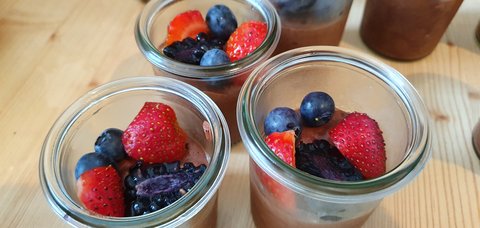
Spoon Archaeology meets Lunch for Locals, 2022
© Staatliche Kunstsammlungen Dresden, Foto: Jacob Franke
150 g / 5 oz. dark chocolate (vegan)
150 ml / 5 fl. oz. aquafaba (equivalent to the water from 1 tin of chickpeas)
1–2 tbsp icing sugar
Pinch of salt
___
1) Melt the chocolate in a bain-marie.
2) Pour the aquafaba from the tin into a bowl, add the pinch of salt and whisk for about 5 minutes with a hand mixer until peaks form.
3) Add the icing sugar one spoonful at a time, continuing to whisk.
4) Finally, pour the cooled liquid chocolate into the bowl and carefully fold in with a spatula.
5) Pour into prepared glasses or containers as desired and leave to stand in the fridge for at least 1 hour.
You can use fresh fruit or fruit sauce to garnish the mousse to your liking. The mousse can be stored in the fridge for up to 5 days.
Tip: the chocolate should be left to cool slightly until it is lukewarm but still pourable; if it is too warm, the foam will collapse.
Also of interest:
Disposable plastic cutlery is an icon of the global throwaway culture. It has been banned in the EU since July 3, 2021. Based on the collection of designers Peter Eckart and Kai Linke, the exhibition "Spoon Archaeology" at the Kunstgewerbemuseum explores this topic.
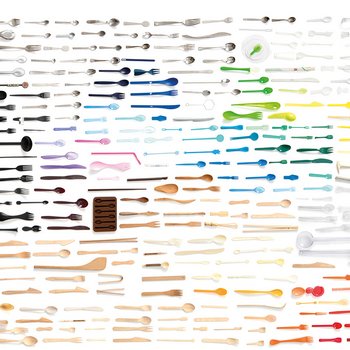
Anna Dünnebier knows more about the history of eating than almost anyone else in Germany. Here, among other things, she describes how people ate before spoons became established, and the correct way to use a spoon.
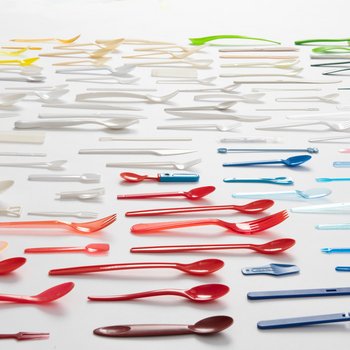
What happens when you give museum audiences a stack of pencils, a few sheets of paper, and an entire room lined with white paper? Dresden artist Artourette did just that as a part of the Children's Biennale at the Japanisches Palais.
